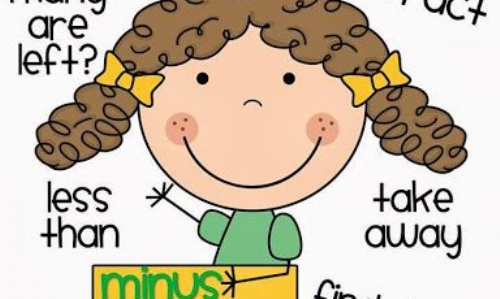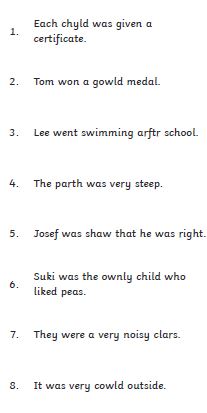Year 1&2 Week 3 June 15th

Big Talk
Have a look at the picture below and talk about the questions underneath.

What had happened when Brian fed the biscuits to his dogs?
How quickly did they grow to this size do you think?
Did Brian give the biscuits to anything/anyone else?
Have the creatures stopped growing?
How will Brian keep them as pets?
What are the benefits/problems with having such enormous pets?
Is there a way for Brian to restore his animals to their original size?
Imagine Brian gave the biscuits to a different animal. Can you draw what they would look like before and after?
These sentences are ‘sick’ and need help to get better. Can you help? Can you add exciting adjectives to make them more interesting? For example- The greedy dogs ate the enormous biscuits quickly.
The dogs ate the biscuits. They started to grow really fast. Now they are big. They need to eat a lot of food.
Phonics
Year 1
This week we would like you to read through the words at the bottom of the blog- Year 1 Phonics. Can you add the sound buttons?
Year 2
This week we would like you to copy out the sentences below and correct the spellings.

Maths Subtraction
(We have attached worksheets to the bottom of the blog for those who find them useful)
Year 1
There are lots of ways you can help your child to understand subtraction. Watch these videos before you begin…
https://www.youtube.com/watch?v=jcPl36Qkk2s
Here are just a few ideas:
1. Focus on subtraction
Your child will be expected to know subtraction facts up to 10. They will begin by subtracting one from a set of objects and noticing that the set has decreased in size. Encourage your child to relate subtraction to taking away by showing them how it works in everyday situations.
For example, if your child has a handful of raisins, ask them how many they have. When they have eaten one, ask them how many they now have left. Do they have more raisins or fewer raisins? What happens if you eat two raisins at the same time? Using real objects or drawings and removing the ones that you want to subtract helps your child to visualise what subtracting really means.
2. Play dice games
Start with a given number of objects, say 12. Then, take it in turns to roll a six-sided die.
The first player to roll subtracts the number shown on the die from the 12 objects and works out how many they have left. They take away the objects they have subtracted.
The next player will then roll the die, and takes away their number from the remaining pile of objects. Play continues until all objects are removed. The player with the most objects at the end of the game is the winner.
You could ask the child to record a calculation for each roll of the die, such as 12 – 3 = 9.
3. Subtraction as difference
Your child is likely to be taught about subtraction as ‘difference’. For example:
’10 – 8′ can also be thought of as ‘What is the difference between 10 and 8?’
Use objects to help your child understand the concept of difference. Why not ask your child to sort their toys into groups, and then see if they can figure out which groups have more or fewer objects? You could then ask them to compare two of the groups.
What is the difference between your child’s number of fluffy toys and their number of hard toys? What about the difference between their red toys and their blue toys? Putting the two groups next to each other in a line is a good way to quickly spot the difference between them.
Encourage your child to record their thinking as a subtraction calculation. For example:
If they have 6 red toys and 2 blue toys, then the difference is 4. This can be written as 6 – 2 = 4.
Year 2
Before you start watch this video https://www.youtube.com/watch?v=AloQc_0ekSI
The children have been taught subtraction using
- place value- tens and one chart
We always draw the largest number and then cross out the tens and ones of the smaller number.
- number line
We always draw the largest number and then jump backwards in tens and then ones.
- partitioning
Like addition- children should start with
- 2 digit number – 1 digit number (no crossing 10) e.g. 36 – 5 =
- 2 digit – 10s e.g. 36 – 20 =
- 2 digit – 2 digit number (no crossing 10) e.g. 36 – 21 =
- 2 digit – 1 digit number (crossing 10) e.g. 36 – 7 =
- 2 digit – 2 digit number (crossing 10) e.g. 36 – 17 =
Most children will be confident at using physical tens and ones to solve problems and then drawing these. Some will be confident using a number line and a few at partitioning. It is good to have a go at all three.
When your child is confident at using the methods then they can have a go at solving word problems still using one of these strategies. They can also solve bar model challenges. Here is an example…
The whole number is 62 and we know that one of the parts is 20. To find the missing part we can subtract 20 from 62.
In year 2 children also need to know that addition and subtraction are the inverse (opposite). Addition and subtraction are inverses or opposites. This means one can be used to 'undo' the other. To check an addition calculation subtraction can be used and vice versa.
https://www.bbc.co.uk/programmes/p0114vdh
Below is a powerpoint to explain inverse relationships and the use of the bar model.
English – Instructions
This week in English we would like you to think about instructions. Why do we have instructions? Where might you find instructions? (recipe, toys, games, construction)
How many different types of instructions can you find at home?
Have a read through of the powerpoint ‘Writing Instructions’.
Year 2- Have a look at the ‘Imperative Verbs powerpoint’. Explain that the instruction words are called ‘imperative verbs’ but we can call them bossy verbs. They are the words which tell us what we need to do.
Can you put the sentences in the right order and then underline the bossy verb?
The book put on the shelf.
Door the open.
Window shut the.
The soup stir with a spoon wooden.
Instructions can be simple, pictorial or very detailed. You could have a go at the How to make a jam sandwich matching activity at the bottom of the blog. You could draw and/or write instructions for-
- A game you know well such as hopscotch or snakes and ladders
- How to do a daily task such as brushing your teeth or getting dressed
- A new game you have created
- How to draw a picture
- How to build something (like Lego or something in Minecraft)
We have included word mats to help children when saying or writing instructions and some posters with helpful reminders on.
Once you have completed a set of instructions ask a family member to follow them. Have you missed anything out? Can you improve them in any way?
Year 2 Science
This week on Developing Experts there is a lesson on- Know how to keep healthy through daily exercise. The mission assignment is to complete a range of exercises and see which one increases your heart rate the most! Don’t forget to check your heart rate before you start each time.
The Science Behind the Science
Most experts do recommend that you get at least sixty minutes of vigorous or moderate exercise every day. Exercise helps your heart. It helps to keep your heart healthy as it reduces your risk of developing stroke or coronary heart disease. Alongside a balanced diet, regular exercise helps to lower your risk of heart disease, stroke, diabetes and even some cancers. It is also important for losing weight, improves your cholesterol and even lowers your blood pressure. Other benefits include: improving your bone and muscle health, boosting your mood and wellbeing, managing weight loss and aids in preventing mental health problems.
Regardless of age, everyone can benefit from exercise. For children physical activity can aid in the development of muscles, bones, joints as well as the heart and lungs. It also helps the child to maintain a healthy weight and has been proved to help manage some symptoms of mental health including depression and anxiety.
Music
As a school we have registered for Norfolk Music Hub's Virtual Big Sing this year. It takes place on Friday 19th June at 2pm and is replayed on Sunday 21st June at 2pm for anyone who wants to watch again or has missed it. It will be like a concert that we can sing along with. There is more information about what the Virtual Big Sing is here. https://www.norfolkmusichub.org.uk/site/vbs-2020/
It would be great if you could practise the songs at home if you want to take part. You can access the music by logging in to Charanga https://charanga.com/site/
Our username is 145369 and our password is elephant.
Then click on the Sing tab at the top.Look at the right hand side of the page where you will see the Virtual Big Sing logo. Click on this and it will take you to the resources. Once on the resources page, you need to click Launch Virtual Big Sing. Then, on the right hand side, all the songs are available that we need to have a go at. You don't have to learn them all. Why not try Lean on Me this week?
Topic History- Henry Blogg
This week we would like you to learn about a famous person who lived locally- Henry Blogg. Here are some great sites to help you learn more about him…
https://www.youtube.com/watch?v=lguJDDLBsOM
https://rnli.org/find-my-nearest/museums/henry-blogg-museum
One of the bravest men who lived – Henry Blogg
He was born in 1876 and died in 1954. Henry Blogg joined the Cromer lifeboat at the age of 18. He was a lifeboat man for 53 years. During this time the Cromer lifeboat was launched 387 times and saved 873 lives.
In 1932 Henry Blogg and his crew rescued 29 people from an Italian ship. A terrible storm had damaged the ship.
Henry Blogg was given lots of medals for being a very brave man.
Henry Blogg and crew to the rescue
In 1917 Henry Blogg and his crew had to row the lifeboat out in very stormy weather to save the lives of 11 people. This rescue took 14 hours.
You could…
- create a fact file about Henry Blogg
- write a letter to Henry Blogg asking him questions about his life
- create a poster supporting the RNLI
- write a short story about Henry Blogg
- investigate floating and sinking (links below)
- design and create a boat that floats of water
- have a go at this quiz https://enjoycromermore.co.uk/news/how-well-do-you-know-henry-blogg-1-5469357
- create an origami boat (link below)






